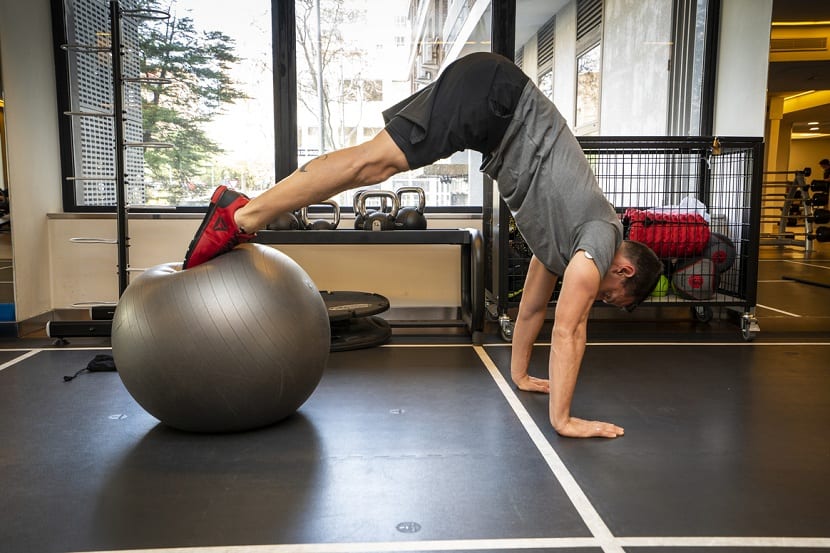
Joining the gym is a very good option to improve your physical activity and boost your body, but it is not the determining factor. You can do a ton of types of exercises at home without spending money or traveling. Exercise is something that does not have to be privatized and that must be free to the choice of each one. One of the ways to work legs and abs apart from the elastic band exercises are exercises with fitball. They are able to work these muscles to a large extent and give them the stimulus that your muscles need to thrive and be in better physical condition.
In this article we collect the best exercises with fitball so that you can move the exercises to your home and have greater adaptability. Do you want to know what they are and how they are made?
The quality of the exercises with fitball
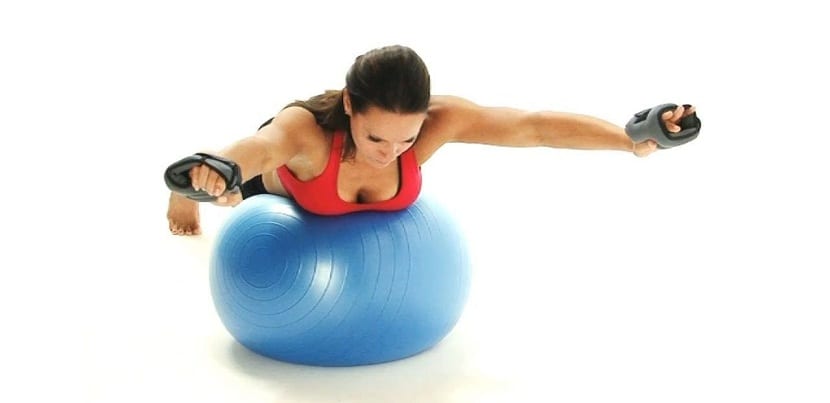
Although most weight rooms and fitness rooms in general have fitballs, it is not something that is very widespread. The fitball is a giant and soft ball that helps you work the mobility of many parts of the body, work muscles such as legs and abs, among others, and improves flexibility and stability. Seeking to improve balance is key to the core and to the functionality of numerous exercises. Therefore, the fitball is key to working this part as an accessory to the rest.
Many people add fitball exercises to their strength routine to give more mobility and work in a different way. The most normal thing is that society in general associate this practice with Pilates. It is true that fitball is widely used in Pilates, but it is not the only area where it is used.
Next, we are going to analyze different exercises according to the muscle group that works the most. We will explain how to do them and we will leave a video to serve as a guide.
Leg exercises
Although many people leave leg work hanging, it is essential to achieve our goals for both health and aesthetics. The lower body has large muscles that also need to be stimulated. A correct stimulus provided by a large selection of exercises for legs can help increase metabolism and the secretion of hormones such as growth and testosterone, vital for the process of muscle gain.
Squat with support
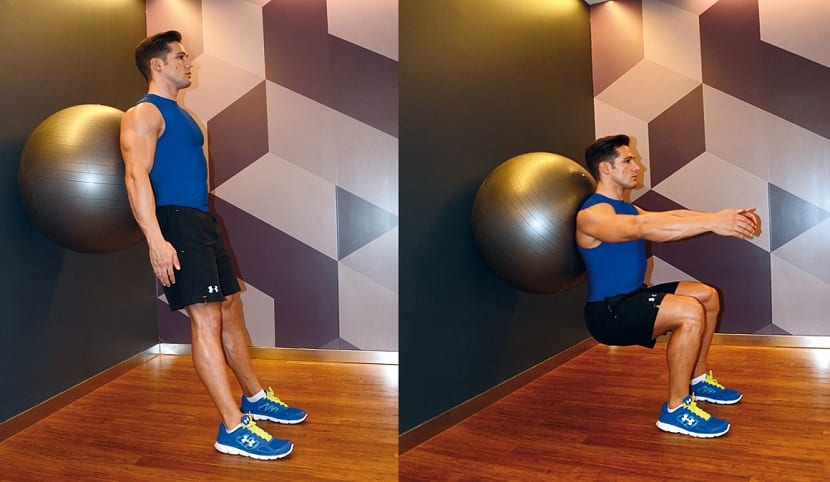
This is the first exercise most indicated and used with fitball. It is a way to ensure the safety of the quadriceps while squatting and avoid possible injuries. In addition, it contributes healthily to improve balance. When in doubt or lack of technique, The fitball helps you maintain balance and correctly flex your knees.
The ideal in this exercise is that, as you gain dexterity, the support you make of the back on the ball decreases until it disappears. This type of exercise helps a lot to gain strength in the abductor muscles.
To do the exercise, we must keep the ball between our legs and apply pressure to have them between them. We hold the pressure for about 8 seconds and relax it. We rest a few seconds and repeat again.
Anterior knee flexion
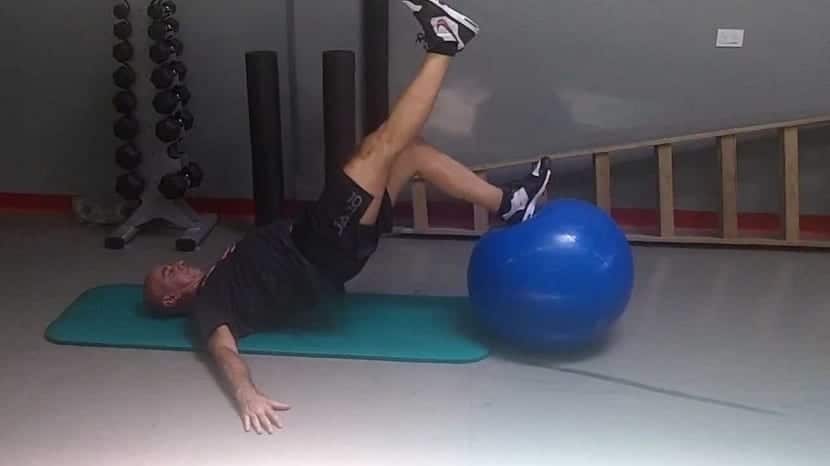
In this case, the fitball must be placed against the back and the wall. Taking it as a point of support, we will flex the knee to a completely vertical position with the ground. In this exercise, you also work your lats and chest to maintain balance. You have to avoid bending your back or leaning too much so as not to injure your knee.
Bulgarian squat
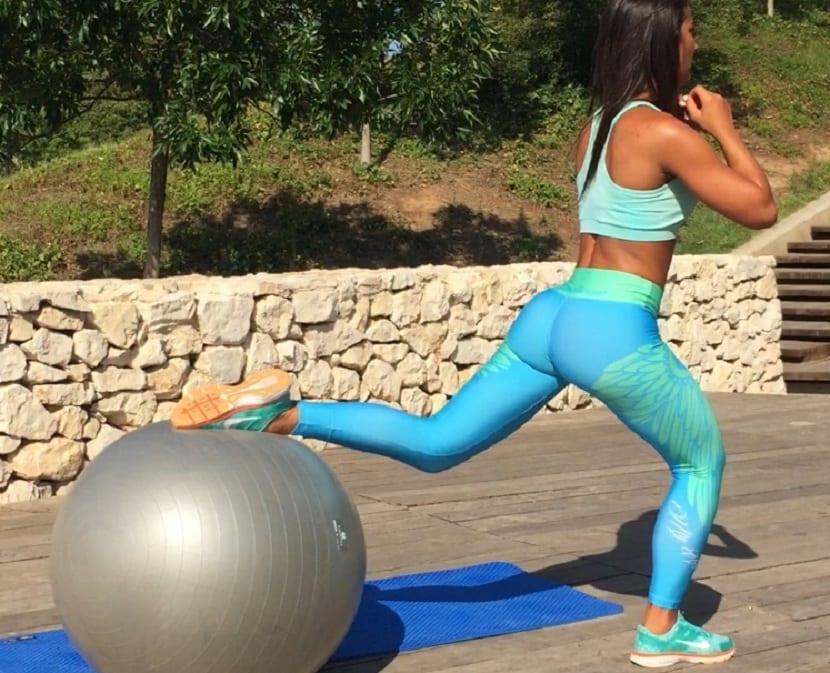
It is performed just like a common Bulgarian squat. We use the fitball as a fulcrum and exercise the quadriceps of the flexed leg. On the other hand, we will also make an effort that will improve the flexibility of the hamstrings and adductors of the leg that is resting on the ball. The important thing here is to flex the knee well and keep the back neutral.
Hip lift

This exercise is perfect for the glute. As an accessory also works the lumbar region and the hamstrings. To have greater stability it is advisable to put your arms open and resting on the ground. Raise the trunk as much as you can to form a diagonal with the body, supporting the legs on the fitball.
Abdominal exercises
As we have mentioned before, the fitball also it is highly recommended to work the abs. It is essential that they are done correctly so that they provide balance and stability. We find exercises like planks, oblique abs, isometric abs and other muscle groups that activate the abdomen more.
Dynamic plate

In this exercise all the muscles of the core are involved. By adding up and down movements of the leg, we will also be adding an accessory stimulus on the gluteus and abductors.
Prone plank
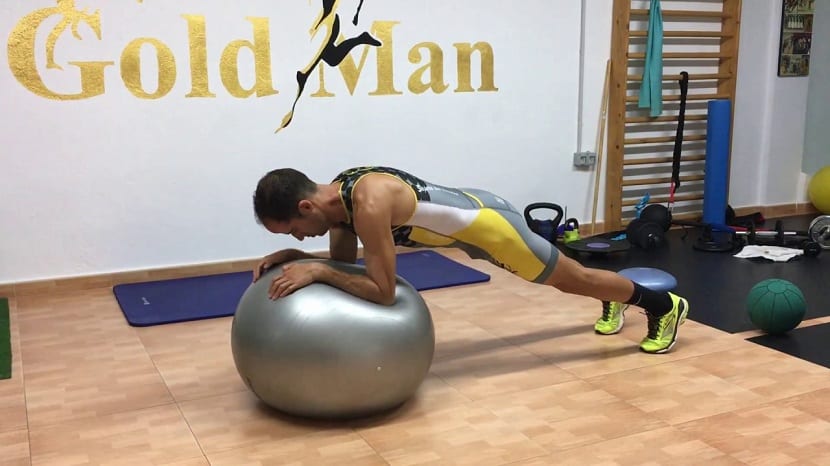
As there are exercises with supine or prone grip, in fitball they are also used. In this case, the classic prone plank is performed on a surface but it will be unstable. This is how we involve more muscles on the abdomen thanks to the need we have to maintain stability during the time that the plank lasts. If it lasts between 15 and 30 seconds, it is more than enough.
Side plate
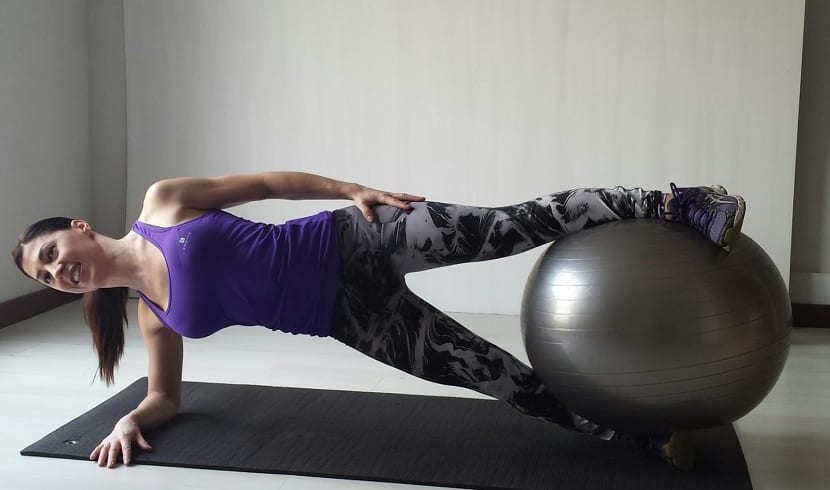
You also have to work the obliques doing the side plank. The balance is dynamic and helps to include more accessory work. In this exercise we must try to keep the body forming the diagonal with respect to the ground. We do not have to raise the torso above the hips as many do. Ideally, the iron should last 15-30 seconds. The longer, the more tension we will exert.
As you can see, fitball exercises can be really useful to add to your routine whatever your goal. It helps your body focus on the muscle group it is working on and you get good results from it. Ideally, establish a fitball routine with series and repetitions programmed to optimize performance.
I hope these exercises help you improve your muscles and increase the balance and stability of the core and that of the whole body.